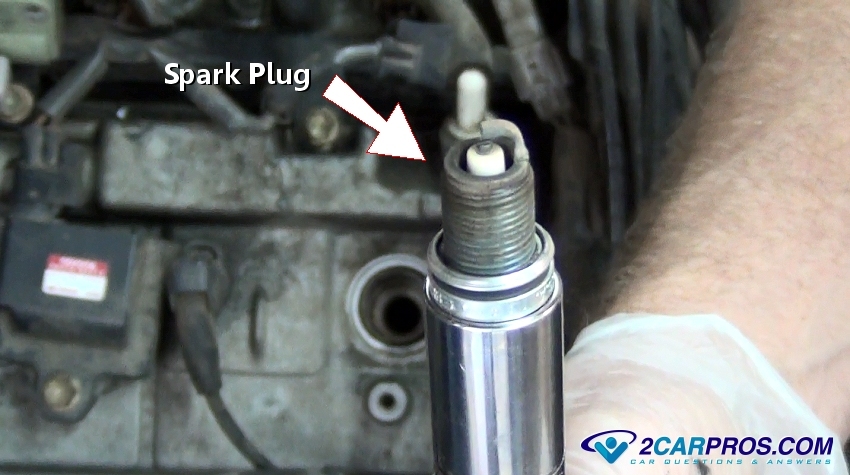31+ How Can You Tell You Have A Blown Head Gasket information
How can you tell you have a blown head gasket. If the oil on the dipstick looks milky or frothy or if there is a milky ring around the oil cap this indicates that coolant is leaking into the oil pan another sign of a blown gasket. 1 Antifreeze Oil Mixture A blown cylinder head gasket can cause oil to mix with the antifreeze fluid. One of the easiest and most effective ways to test if you have a blown head gasket is to take a look at your engine oil. You can also check your coolant levels since low levels may mean the head gasket has blown and coolant is leaking out. Increased engine running temperature. The old mechanics trick is to take off the radiator cap start the car and look for bubbles in the coolant. The head gasket is a mechanical seal thats fitted between the engine block and the piston cylinder head. The principal cause of head crackingwarping is overheating eg driving the car with the temperature gauge in the red but heads can also crack due to age vibration or poor design. You may also notice that the cooling system is under extreme pressure. In this video we try to debunk a few myths out there and explain what you really need to be looking for when diagnosing a failed engineMy Company BSG Automo. As a result the air-fuel ratio affects your vehicle to run lean or rich fuel. Radiator constantly needing to be topped up with water or coolant.
Engine oil mixed with coolant is indicative of a blown head gasket. This issue with air-fuel ration usually gets reflected on the smoke coming out of the tailpipe of your exhaust system. Check the engine coolant level. Its always best to use a sealer at the earliest stage and seek professional help as soon as possible to repair the head gasket before it affects other areas of your. How can you tell you have a blown head gasket You can check it by pulling the dipstick but if youre close to needing an oil change its far more effective to drain it from the pan and look. A sudden drop in coolant level with no apparent leaks also indicates a serious coolant leak which can be a sign of a blown gasket. The signs of a blown head gasket can be subtle. Reoccurring engine overheating is one of the most common telltale signs that your engine has a faulty head gasket. When you have a blown head gasket there is a high chance that the oil and coolant leak to the cylinders area. Engine gauge showing maximum temperature after a few minutes. Since the head gasket is meant to prevent the mixture of these fluids a blown head gasket could cause this and the results can be catastrophic. You will notice how quickly it overheats despite checking that the thermostat radiator water pump and cooling system are all working fine. Signs Symptoms of a Blown Head Gasket One of the most common signs of a faulty head gasket is overheating.
 Is Fixing A Blown Head Gasket Worth It Bluedevil Products
Is Fixing A Blown Head Gasket Worth It Bluedevil Products
How can you tell you have a blown head gasket Typically head gaskets fail when the head and the engine expend at different rates and the gasket cant seal the newly expanded gap.

How can you tell you have a blown head gasket. A blown head gasket can allow combustion gases to enter the cooling system. An external leak between the engine block and cylinder head typically around the exhaust manifold. You may want to look out for these common signs of a blown head gasket.
There are symptoms of a blown head gasket If your car has a leaking head gasket there are some symptoms that will let you know theres an issue. More specifically your engine will overheat and bellow out white steam regardless of whether or not you can see any leaking or spraying coolant. If there is a sweet smelling white cloud following behind you at all times you may have a bad head gasket.
If your engine often overheats your head gasket may have blown. This happens when the head gasket is blown. Bubbles in the Radiator andor Reservoir Overflow.
If your car is constantly overheating it may be a symptom of a blown head gasket. Because of this there may be visible bubbles in the radiator andor coolant reservoir. If you suspect a head gasket failure the scientific test is to check for combustion gasses in the cooling system.
Here are the most common indicators that your engines head gasket has failed. An external oil or coolant leak at the seam between the engine block and cylinder head is a sign that you have a head gasket failure or a cracked block. This issue is made worse on some motors which use an iron cylinder block and an aluminum head.
Step 6 Check the engine oil. Here are eight of the most common indications that your head gasket has failed. A blown head gasket alone wont make your car undriveable but the knock-on damage it causes for non lubricated bearings and overheating parts can deem your engine irreparable.
If the car is constantly losing coolant it may be because your cars coolant is leaking from the cooling system into the oil pan. Below are three of the most common signs that indicate you have a blown head gasket. This test will show if the compression has leaked into the cooling system and therefore if the head gasket has blown.
On disassembly check for cracks and cylinder head warping.
How can you tell you have a blown head gasket On disassembly check for cracks and cylinder head warping.
How can you tell you have a blown head gasket. This test will show if the compression has leaked into the cooling system and therefore if the head gasket has blown. Below are three of the most common signs that indicate you have a blown head gasket. If the car is constantly losing coolant it may be because your cars coolant is leaking from the cooling system into the oil pan. A blown head gasket alone wont make your car undriveable but the knock-on damage it causes for non lubricated bearings and overheating parts can deem your engine irreparable. Here are eight of the most common indications that your head gasket has failed. Step 6 Check the engine oil. This issue is made worse on some motors which use an iron cylinder block and an aluminum head. An external oil or coolant leak at the seam between the engine block and cylinder head is a sign that you have a head gasket failure or a cracked block. Here are the most common indicators that your engines head gasket has failed. If you suspect a head gasket failure the scientific test is to check for combustion gasses in the cooling system. Because of this there may be visible bubbles in the radiator andor coolant reservoir.
If your car is constantly overheating it may be a symptom of a blown head gasket. Bubbles in the Radiator andor Reservoir Overflow. How can you tell you have a blown head gasket This happens when the head gasket is blown. If your engine often overheats your head gasket may have blown. If there is a sweet smelling white cloud following behind you at all times you may have a bad head gasket. More specifically your engine will overheat and bellow out white steam regardless of whether or not you can see any leaking or spraying coolant. There are symptoms of a blown head gasket If your car has a leaking head gasket there are some symptoms that will let you know theres an issue. You may want to look out for these common signs of a blown head gasket. An external leak between the engine block and cylinder head typically around the exhaust manifold. A blown head gasket can allow combustion gases to enter the cooling system.
 How To Test An Automotive Engine Head Gasket
How To Test An Automotive Engine Head Gasket